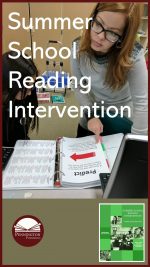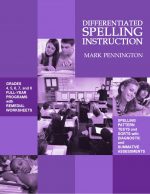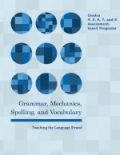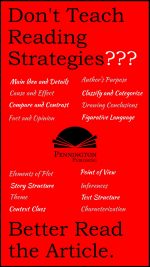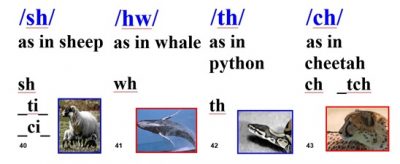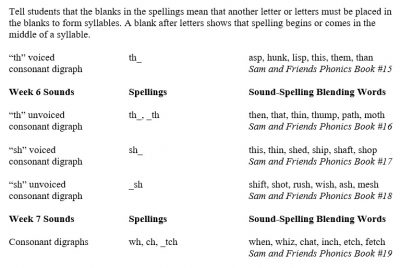Orton-Gillingham Review
I don’t usually spend much time critiquing reading intervention programs. Obviously, as a publisher I have built-in bias, and I will end up this article with a convincing case as to why teachers should purchase my own products.
I did review the READ 180 Next Generation, System 44, and Language Live! programs because each program was piloted in local schools last year. However, recently I’ve been getting a number of inquiries regarding the Orton-Gillingham Approach, so I thought I’d offer my thoughts and cite relevant research studies regarding this program. Many of the same comments could be applied to similar approaches to reading instruction: the Spalding Method, Wilson Reading System, and Lindamood Bell.
Orton-Gillingham Quick Overview
Orton-Gillingham (O-G) has long been a favorite program of special education and home school teachers. Recently, those in the science of reading camp have adopted O-G as a favorite. Arkansas and Colorado specifically favor O-G related programs in their state reading program reviews. Some parochial schools also favor the program. Response to intervention programs use a multi-tiered approach to remedial reading both in and out of mainstream classes to meet the needs of older, struggling readers.
The program is chiefly selected for developmental and remedial readers because of two instructional characteristics: explicit, systematic phonics and a multi-sensory approach to sight words acquisition and spelling instruction. The program features movement and color to make learning memorable. The Wikipedia article provides a concise and balanced overview of the O-G history and instructional philosophy.
Orton-Gillingham Review: the Good, the Bad, and the Weird
The Good
Any teacher with some experience teaching reading will be able to teach the O-G program without extensive training. You don’t need the Orton-Gillingham certification to use its program resources. It’s not rocket science.
The highlight of the program is the instructional scope and sequence. Its phonics sequence makes sense and is similar to that of Open Court, READ 180 and my own program. Its systematic instructional approach is consistent and explicit. No synthetic, analytic, or analogous crossovers.
Good teachers can separate the wheat from the chaff. There is much value to the O-G program and many teachers swear by its results.
The Bad
The full program is not easy to implement and takes a significant amount of teacher prep for daily use. Additionally, new teachers will need the full O-G training. Because the program is so step-by-step, it takes an inordinate amount of time to achieve results for some beginning and remedial readers. Realistically, this is problematic for two reasons:
1. Teachers do not have unlimited time to prep, re-teach, re-teach, and re-teach until all students get it. Sometimes, skipping an unmastered skill, such as consonant digraphs, makes sense and students later master that skill in the midst of learning, say, consonant blends. This is not the O-G Approach. Furthermore, teachers, administrators, parents, and most importantly, students, want to see results quickly. This is especially true for older, struggling readers.
2. The program claims to be flexible, and it is in part; however, it does not yield on its systematic, explicit phonics methodology. The new position paper of the International Literacy Association correctly summarizes the reading research that explicit phonics instruction works, but that systematic instruction did not achieve better results than other approaches, despite claims to the contrary by the International Dyslexia Association (which does not advocate any one explicit, systematic phonics approach, but clearly favors that of Orton-Gillingham). In fact, the International Literacy Association specifically cites the lack of results with the O-G Approach:
In their report on the effects of specific programs, the Orton-Gillingham (O-G) program had the lowest average effect size (0.23). The remainder of the programs ranged from 0.35 to 0.68 (p. 2-160). Looking further, only two of the O-G studies assessed comprehension, and the average effect size on comprehension was -0.03. Only one study reported a delayed assessment of comprehension, and the effect size was -0.81 (six months after
the completion of the intervention). That is minus 0.81—thus participation in an O-G program appears to have had a large negative impact on reading achievement in comparison with other intervention methods evaluated in the study.
Ouch! While I affirm the value of explicit, systematic phonics instruction and help teachers implement this approach with my 16 week sound-spelling blending and phonics workshops, I’ve taught enough beginning and remedial reading to know that every student does not learn in the same way. One size does not fit all. Sometimes, an onset-rime approach with rimes (word families), a syllable-by-syllable approach, or more word fluency will do the trick. My Teaching Reading Strategies program offers each of these alternative or both-and resources. Whatever it takes to get quickly to the end result: fluent readers with excellent reading comprehension. Begin with explicit, systematic phonics instruction for struggling readers; adjust as needed.
3. O-G is a traditional print to speech program, but unlike my own program, it does not include many speech to print activities.
The Weird
Every reading program has its idiosyncrasies, mine included. For example, my 54 Sam and Friends Guided Reading Phonics Books are purely decodable with the exception of only two high frequency sight words per book. While every other collection of decodable guided reading or take-home books cheats a bit by adding in a few extra sight words to improve reading coherency and fluent reading, mine do not. It’s one of the weird features of my resources… but I think a good one that is less confusing to struggling readers.
Orton-Gillingham has its share of idiosyncrasies. As teachers are trained in the O-G Approach, most will shake their heads at some of program practices, deemed essential to O-G purists. Two philosophical tenets of the program are simply unfounded and influence some instructional components:
1. Dyslexia is championed as the root cause of reading problems. In fact, Samuel Orton coined the term back in the 1920s. Recently, the influential International Literacy Association (formerly the International Reading Association) published a position paper which debunks dyslexia. The International Dyslexia Association, which affirms the Orton-Gillingham Approach, weighed in on the position paper. The International Literacy Association refuted point-by-point each of the O-G assertions.
The O-G multi-sensory approach does not have a solid research base. Following is the gist of this methodology:
Orton-Gillingham teaching sessions are action-oriented and involve constant interaction between the teacher and the student and the simultaneous use of multiple sensory input channels reinforcing each other for optimal learning. Using auditory, visual, and kinesthetic elements, all language skills taught are reinforced by having the student listen, speak, read and write. For example, a dyslexic learner is taught to see the letter A, say its name and sound and write it in the air–all at the same time. The approach requires intense instruction with ample practice. The use of multiple input channels is thought to enhance memory storage and retrieval by providing multiple “triggers” for memory (https://wiki2.org/en/Orton-Gillingham).
Although all good teaching involves the learners’ variety of sensory experiences, the zealous focus on multi-sensory practice in the O-G Approach is extraneous or a waste of time, at best, and counterproductive, at worst. For example, writing spellings in the air reinforce the long-discredited notion that spelling is a visual skill. Most teachers stopped tracing letters and memorizing letter shapes decades ago. Spelling is primarily an auditory skill, which is ironically reinforced throughout the phonemic awareness and phonics instructional components of the O-G program.
For more regarding the research on multi-sensory approaches, learning styles, and multiple intelligences, check out my article, Don’t Teach to Learning Styles and Multiple Intelligences.
Comparing The Science of Reading Intervention Program to the Orton-Gillingham Approach
Both the O-G approach and my reading intervention program follow nearly the same instructional phonics sequence as Orton-Gillingham and both programs provide explicit, systematic phonics instruction. However, my program includes all the other resources teachers need to teach to each unique learner with assessment-based instruction. My program is designed exclusively for reading intervention. Resources are catered to older, struggling readers who have not yet mastered the basics of reading.
Unlike Orton-Gillingham, my program helps teachers isolate and teach to the specific needs of struggling readers with targeted instruction.
Unlike Orton-Gillingham, my training program is free and included. This program is user-friendly and requires only minimal prep and correction. Here’s an overview of the program:
*****
FREE DOWNLOAD TO ASSESS THE QUALITY OF PENNINGTON PUBLISHING RESOURCES: The SCRIP (Summarize, Connect, Re-think, Interpret, and Predict) Comprehension Strategies includes class posters, five lessons to introduce the strategies, and the SCRIP Comprehension Bookmarks.
Get the SCRIP Comprehension Strategies FREE Resource:
![]()
*****
The Science of Reading Intervention Program
The Science of Reading Intervention Program: Word Recognition includes explicit, scripted instruction and practice with the 5 Daily Google Slide Activities every reading intervention student needs: 1. Phonemic Awareness and Morphology 2. Blending, Segmenting, and Spelling 3. Sounds and Spellings (including handwriting) 4. Heart Words Practice 5. Sam and Friends Phonics Books (decodables). Plus, digital and printable sound wall cards and speech articulation songs. Print versions are available for all activities. First Half of the Year Program (55 minutes-per-day, 18 weeks)
The Science of Reading Intervention Program: Language Comprehension resources are designed for students who have completed the word recognition program or have demonstrated basic mastery of the alphabetic code and can read with some degree of fluency. The program features the 5 Weekly Language Comprehension Activities: 1. Background Knowledge Mentor Texts 2. Academic Language, Greek and Latin Morphology, Figures of Speech, Connotations, Multiple Meaning Words 3. Syntax in Reading 4. Reading Comprehension Strategies 5. Literacy Knowledge (Narrative and Expository). Second Half of the Year Program (30 minutes-per-day, 18 weeks)
The Science of Reading Intervention Program: Assessment-based Instruction provides diagnostically-based “second chance” instructional resources. The program includes 13 comprehensive assessments and matching instructional resources to fill in the yet-to-be-mastered gaps in phonemic awareness, alphabetic awareness, phonics, fluency (with YouTube modeled readings), Heart Words and Phonics Games, spelling patterns, grammar, usage, and mechanics, syllabication and morphology, executive function shills. Second Half of the Year Program (25 minutes-per-day, 18 weeks)
The Science of Reading Intervention Program BUNDLE includes all 3 program components for the comprehensive, state-of-the-art (and science) grades 4-adult full-year program. Scripted, easy-to-teach, no prep, no need for time-consuming (albeit valuable) LETRS training or O-G certification… Learn as you teach and get results NOW for your students. Print to speech with plenty of speech to print instructional components.
Get the Diagnostic ELA and Reading Assessments FREE Resource:


